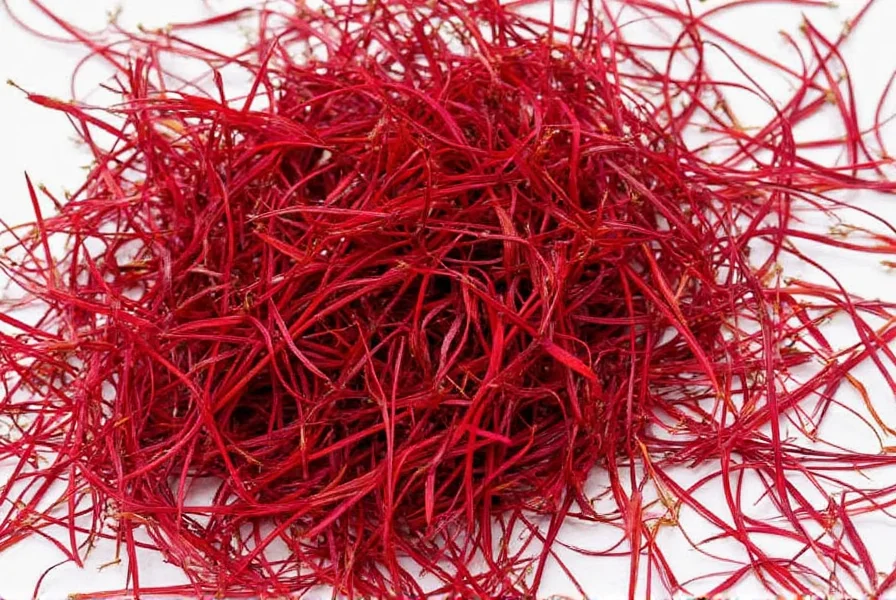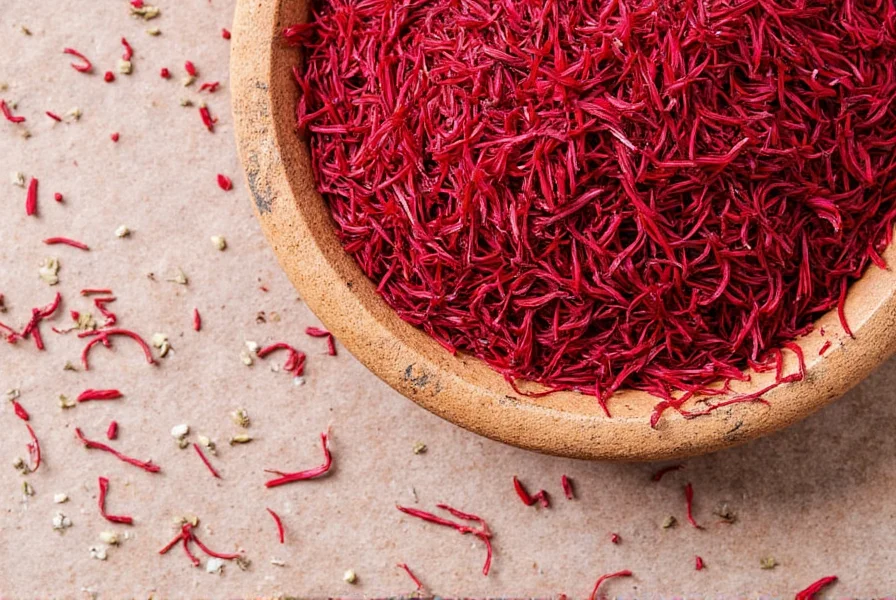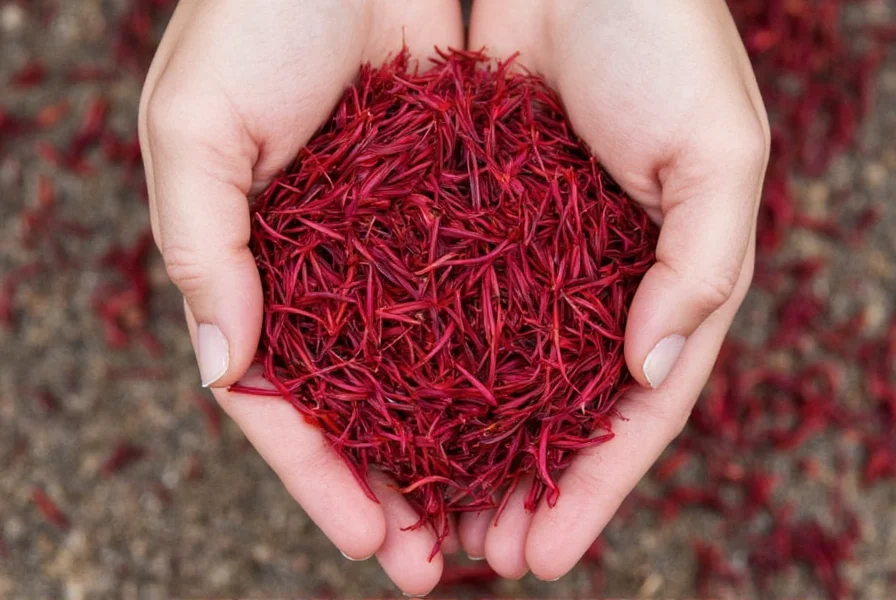Saffron cultivation requires planting Crocus sativus corms in well-draining soil with full sun exposure during late summer or early autumn. Plant corms 4-6 inches deep and 4-6 inches apart in soil with pH 6-8. Water sparingly after planting, then maintain moderate moisture during growth. Harvest delicate red stigmas by hand in autumn when flowers bloom, then dry them immediately. Each corm produces just 3-4 threads per season, making saffron labor-intensive but potentially profitable when done correctly.
Known as "red gold," saffron remains the world's most expensive spice by weight, fetching up to $5,000 per pound. This extraordinary value stems from the meticulous hand-harvesting process required to collect the delicate stigmas from Crocus sativus flowers. While challenging, saffron cultivation offers rewarding results for gardeners and small-scale farmers willing to invest the necessary time and attention to detail. This comprehensive guide provides science-based methods for successfully growing saffron, whether in your backyard or on a commercial scale.
The Botanical Foundation of Saffron Cultivation
Saffron comes exclusively from Crocus sativus, a sterile triploid flower that cannot reproduce through seeds. This unique characteristic means all saffron crocus plants are genetically identical clones propagated solely through corm division. Understanding this botanical reality is crucial for successful saffron cultivation, as it explains why planting quality corms is the only viable starting point. The plant's sterility also contributes to saffron's high value, as each flower produces just three precious red stigmas that become the saffron threads we use in cooking and medicine.
Essential Growing Conditions for Optimal Saffron Yield
Saffron crocus thrives in regions with specific climate patterns: hot, dry summers followed by warm, wet springs and autumns. The ideal temperature range spans from 68-86°F (20-30°C) during active growth periods. While traditionally associated with Mediterranean climates, saffron can be successfully cultivated in diverse regions including parts of North America, Canada, and Northern Europe with proper site selection and care.
| Soil Requirement | Optimal Range | Acceptable Range |
|---|---|---|
| pH Level | 6.0-8.0 | 5.5-8.5 |
| Drainage | Excellent | Good |
| Organic Matter | 20-30% | 15-35% |
| Soil Type | Sandy loam | Loam to clay loam |
Soil preparation represents one of the most critical steps in saffron cultivation. The ideal soil combines excellent drainage with sufficient moisture retention—typically achieved through sandy loam amended with organic matter. Heavy clay soils require significant amendment with sand and compost to prevent corm rot, while pure sandy soils need additional organic material to retain moisture and nutrients. Before planting, incorporate 3-4 inches of well-rotted compost into the top 8-10 inches of soil to create optimal growing conditions for your saffron corms.

Step-by-Step Saffron Cultivation Process
Selecting and Preparing Quality Corms
The foundation of successful saffron cultivation begins with selecting high-quality corms. Look for firm, plump corms measuring 2.5-3.5 cm in diameter with intact papery outer layers. Larger corms typically produce more flowers, though they come at a higher initial cost. Before planting, inspect corms carefully and discard any showing signs of mold, soft spots, or damage. For best results, source corms from reputable suppliers specializing in saffron cultivation rather than generic garden centers.
Planting Timing and Technique
Plant saffron corms in late summer to early autumn (August-September in the Northern Hemisphere), allowing 6-8 weeks for root development before flowering begins. Follow these precise planting guidelines:
- Plant corms 4-6 inches deep (deeper in sandy soils, shallower in clay)
- Maintain 4-6 inch spacing between corms
- Arrange corms in rows 12-18 inches apart
- Position corms with pointed end facing upward
- Water thoroughly after planting, then allow soil to dry slightly
Watering and Nutrient Management
Saffron requires careful water management throughout its growth cycle. After initial planting, water deeply but infrequently to encourage deep root growth. During active growth (autumn through spring), maintain moderate soil moisture without saturation. Reduce watering as summer approaches and the plant enters dormancy. Overwatering represents the most common cause of cultivation failure, leading to corm rot.
Fertilization should focus on phosphorus and potassium rather than nitrogen. Apply a balanced 5-10-10 fertilizer at planting time, then supplement with potassium-rich amendments during flowering. Organic options like bone meal and wood ash provide excellent nutrient sources while improving soil structure. Avoid high-nitrogen fertilizers that promote excessive foliage at the expense of flower production.
Harvesting Saffron: Precision and Timing
Saffron harvesting demands precision and timing. Flowers typically bloom in mid to late autumn, opening early in the morning and closing by midday. Harvest flowers daily during the 2-3 week blooming period, preferably between 6-9 AM when flowers are fully open but before they begin to wilt.
The critical step involves carefully removing the three red stigmas from each flower. Use tweezers or clean fingers to gently pull the stigmas away from the flower without damaging them. This delicate process requires patience and steady hands, as damaged stigmas lose quality and value. Expect to harvest approximately 150,000 flowers to produce just one kilogram of dried saffron.

Post-Harvest Processing and Drying Techniques
Immediately after harvesting, process saffron threads to preserve their color, flavor, and aroma. The drying process represents a critical stage that significantly impacts final quality. Traditional methods involve spreading stigmas on fine mesh screens in a warm, dark, well-ventilated area. Modern producers often use food dehydrators set to 104-122°F (40-50°C) for 10-12 hours.
Properly dried saffron should feel brittle but not powdery, retaining its deep red color with minimal orange tips. Store dried saffron in airtight containers away from light and moisture. When stored correctly, saffron maintains its quality for 2-3 years, though peak flavor occurs within the first year.
Common Challenges in Saffron Cultivation and Solutions
Even experienced growers encounter challenges with saffron cultivation. Understanding these common issues helps prevent costly mistakes:
- Corm rot: Caused by excessive moisture, particularly in heavy soils. Prevent by ensuring excellent drainage and avoiding overwatering.
- Low flower production: Often results from insufficient chilling hours or poor corm quality. Select appropriate varieties for your climate zone.
- Pest damage: Rodents and birds may disturb newly planted corms. Use protective netting or plant companion crops that deter pests.
- Reduced stigma quality: Can occur from improper drying techniques. Maintain consistent, moderate temperatures during drying.
- Declining yields: After 3-5 years, corms become overcrowded. Dig up and divide corms every 3-4 years to maintain productivity.
Realistic Yield Expectations for Saffron Growers
Understanding realistic yield expectations prevents disappointment in saffron cultivation. In optimal conditions, expect:
- 10-15 flowers per mature corm annually
- 30-45 fresh stigmas per square meter in year one
- 5-8 grams of dried saffron per square meter after year three
- Peak production between years 3-7 of established planting
Commercial saffron farms typically achieve 8-12 kg per hectare in established plantings, though exceptional yields up to 20 kg/ha occur under ideal conditions. Home gardeners can expect approximately 0.5-1 gram of dried saffron from a 10 square foot planting area. While these yields seem modest, the high market value makes even small-scale production potentially worthwhile.
Is Home Saffron Cultivation Worthwhile?
For culinary enthusiasts, growing saffron at home offers unique benefits despite the labor involved. A modest 10 square foot patch can produce enough saffron for personal use, eliminating the need to purchase expensive commercial saffron. Home cultivation ensures complete traceability and quality control, allowing you to verify the saffron's purity and freshness.
Commercial viability requires careful economic analysis. With saffron selling for $10-30 per gram, even small-scale production can generate significant returns. However, the intensive labor requirements mean profitability depends heavily on local labor costs. In regions with lower labor costs, saffron cultivation represents a potentially lucrative specialty crop. For most home growers, the satisfaction of producing this precious spice outweighs pure economic considerations.











 浙公网安备
33010002000092号
浙公网安备
33010002000092号 浙B2-20120091-4
浙B2-20120091-4